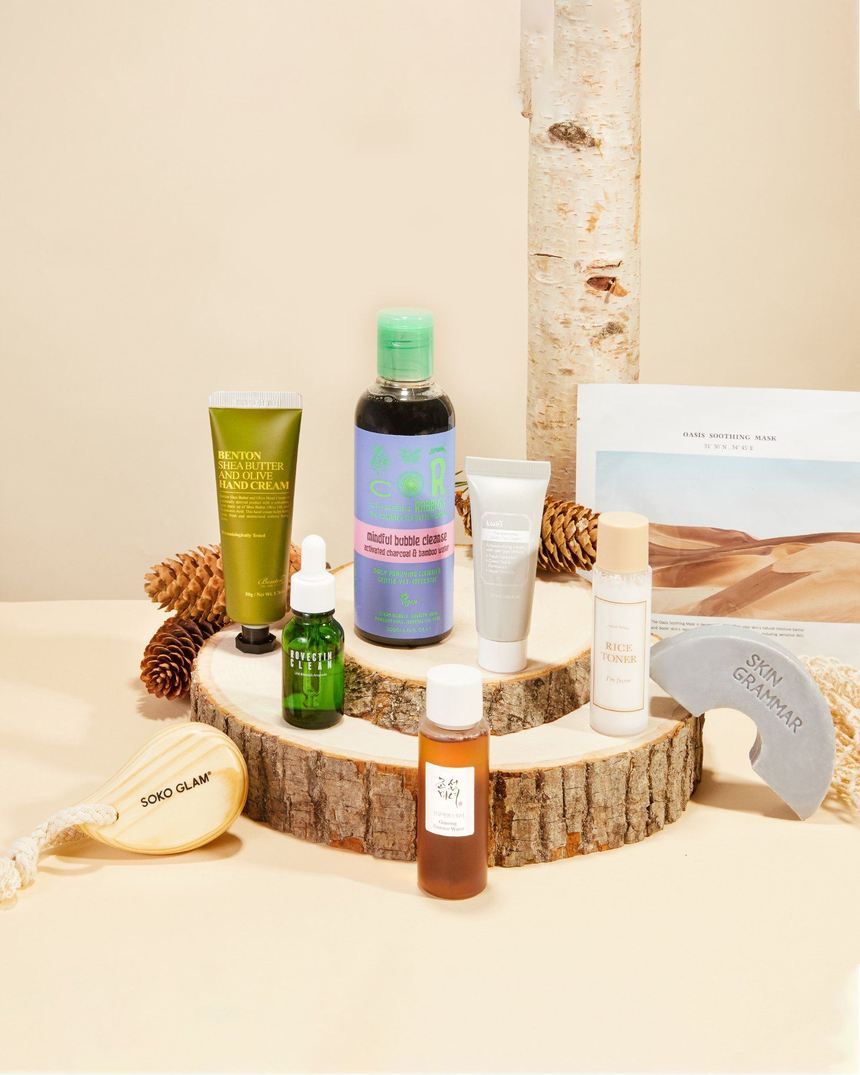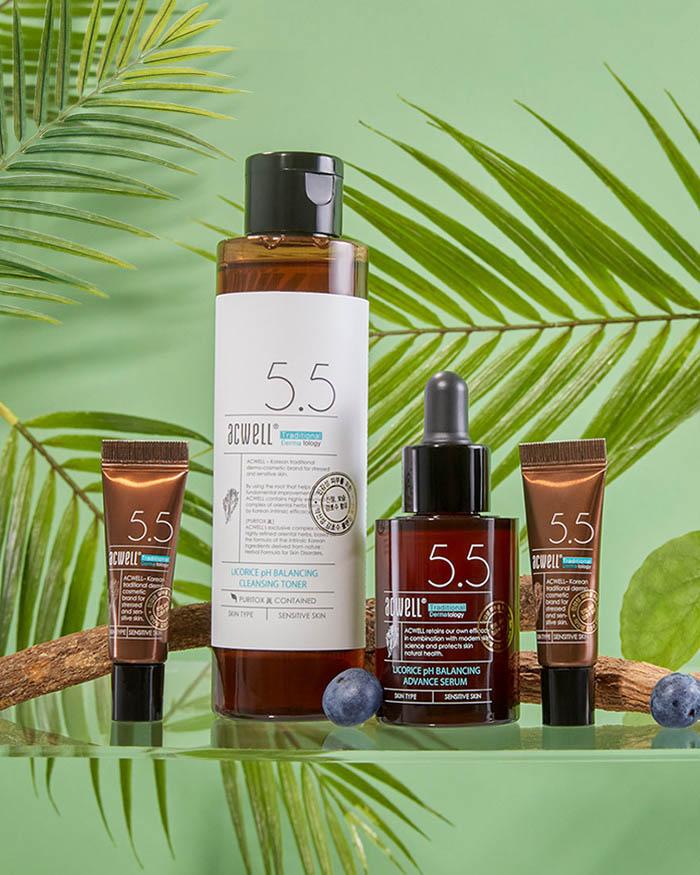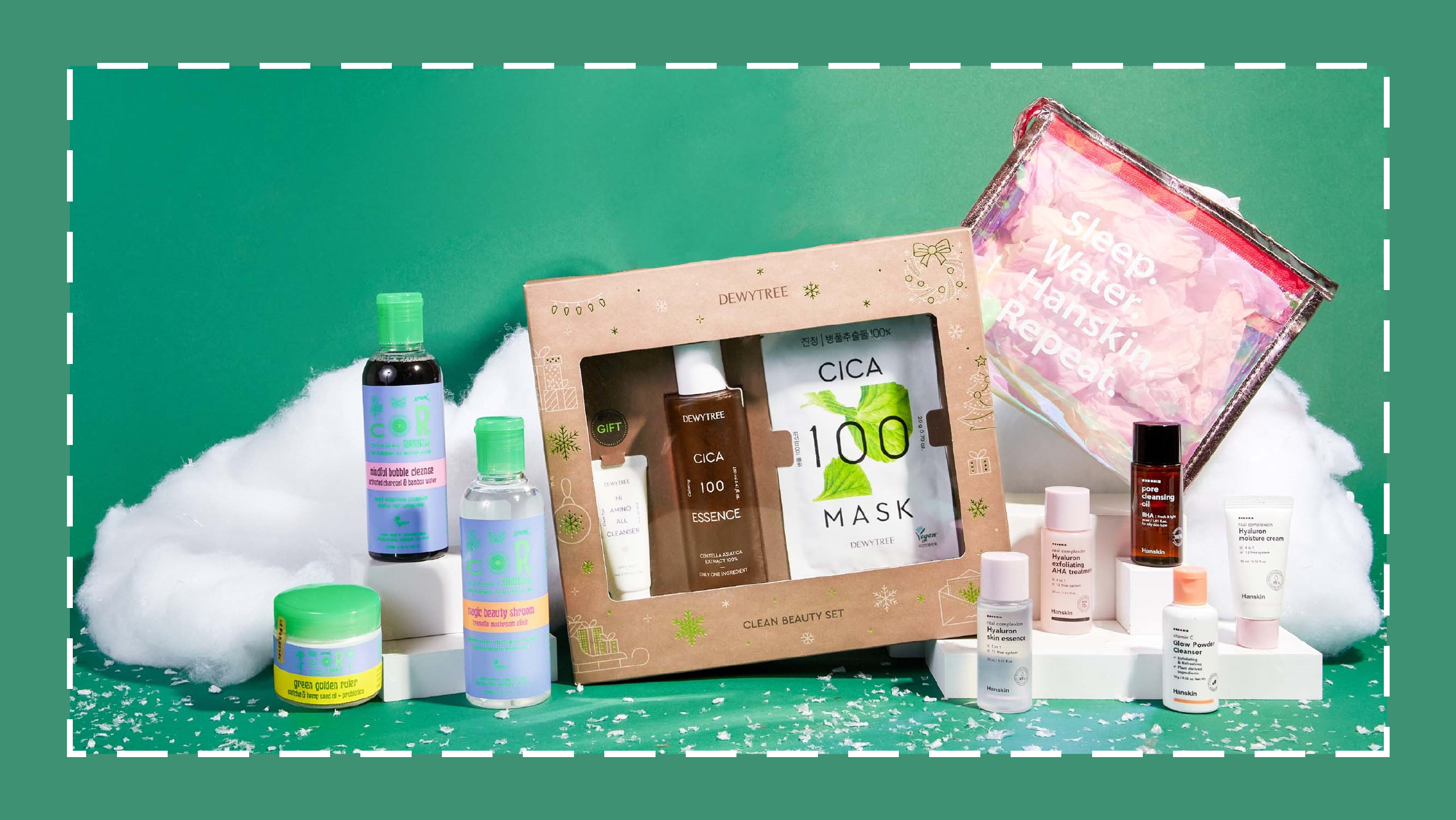On the prowl for a skin care gift that’ll land this holiday season? We’ve got a selection of skin care bundles for everyone on your list.
We might be a bit biased, but we think skin care is one of the best gifts you can give! It’s a gift that says, “You deserve to invest in you,” and it keeps giving long after the holiday lights come down.
Skin care’s highly personalized, tailored to each person’s skin type and skin concern, so it can be a truly personalized gift for everyone in your life.
We’ve rounded up our favorite gift sets for every type of person on your list whether they’re a clean beauty lover, mama-to-be, or skin care fiend aiming to level-up their existing regimen. Don’t forget to snag something for yourself, too!

Soko Glam Advent Calendar, $110 (Value: $173)
Best for: The One Who Celebrates All Season Long
Why celebrate the holidays just a few days out of the year when you could opt for a full-blown, joy-filled countdown? Soko Glam’s 2021 Advent Calendar is back and better than ever. Your giftee will receive 16 gifts over 12 days, and including former Best of K-Beauty winners, cult-favorites, and indulgent treatments.
It comes with the following full and travel-size items:
- Acwell Licorice pH Balancing Advance Serum (full size)
- Good (Skin) Days™ On The Bright Side Moisturizer (full size)
- Goodal Green Tangerine Vita C Eye Gel Patch (full size)
- Rovectin Skin Essentials Barrier Repair Face Oil (full size)
- The Klog Soft Shield Pimple Patch (full size)
- Klairs Midnight Blue Calming Cream (full size)
- Saturday Skin Yuzu Vitamin C Sleep Mask (travel size)
- Hanskin Real Complexion Hyaluron Moisture Cream (travel size)
- Hanskin Vitamin C Glow Mask (travel size)
- I’m From Rice Toner (travel size)
- Banila Co Clean It Zero Cleansing Balm – Pore Clarifying (travel size)
- Benton Fermentation Eye Cream (travel size)
- Benton Snail Bee High Content Skin Lotion (travel size)
- Juice to Cleanse Vinegar Kombucha Essence (travel size)
- Klavuu Pure Pearlsation Revitalizing Facial Cleansing Foam (travel size)
- Isntree Green Tea Fresh Toner (travel size)
Read more about Soko Glam’s 2021 advent calendar.

Dewytree Clean Beauty Set, $36 (Value: $45)
Best for: Clean Beauty Fans
If you’re shopping for someone who prefers single ingredient formulations, minimal ingredients and clean formulations, this is the perfect skin care gift set. It features three products from Dewytree, that help nourish, hydrate, and strengthen the skin barrier.
You’ll get:
- Cica 100 Essence (full size)
- Cica 100 Mask (3)
- Hi Amino All Cleanser (travel size)

Chasin’ Rabbits The Limited Edition Set, $80 (Value: $98)
Best for: Playful Spirits
The colorful packaging of Chasin’ Rabbits products will hook you, but the formulas are what’ll keep your giftee coming back for more. This indie brand prides itself on its 100% vegan and cruelty-free formulas, and we think this limited edition set is perfect for anyone in their teens, 20s, 30s, or beyond looking for multitasking heroes.
The set comes with:
- Mindful Bubble Cleanse Cleanser (full size)
- Magic Beauty Shroom Essence (full size)
- Green Golden Ruler Cream (full size)
- Shall We Band Headband
- Sticker Sheet
- Tie-Dye Dust Bag

The Essential Vegan Skin Care Set, $60 (Value $98)
Best for: Vegan Beauty Lovers
Here’s the perfect way to introduce new vegan beauty products to your skin care bestie. It comes with eight best-selling products from different K-Beauty brands along with a reusable mesh tote and ultra soft cleansing brush.
The set includes:
- Chasin’ Rabbits Mindful Bubble Cleanse (full size)
- Rovectin LHA Blemish Ampoule (full size)
- Benton Shea Butter And Olive Hand Cream (full size)
- Skin Grammar Sweet & Gentle Shampoo Bar (full size)
- Dr. Althea Oasis Soothing Mask (single)
- Beauty of Joseon Ginseng Essence Water (travel size)
- I’m From Rice Toner (travel size)
- Klairs Fundamental Water Gel Cream (travel size)
- Mesh Tote
- Facial Cleansing Brush

Then I Met You™ The Complete Collection, $180 (Value $232)
Best for: Giftees Eager to Level Up Their Skin Care Regimen
We guarantee your favorite skin care lover will be over the moon with Then I Met You’s complete collection. Valued at over $230, it comes with a gift bag and six full-size versions of TIMY’s premium lineup, which have received wide acclaim from skin care enthusiasts and beauty editors alike.
It includes:
- Living Cleansing Balm
- Soothing Tea Cleansing Gel
- Birch Milk Refining Toner
- The Giving Essence
- Calming Tide Gel Cream™
- Honey Dew Lip Mask
- Then I Met You™ Signature Canvas Tote Bag

Hanskin Holiday Kit, $35 (Value $45)
Best for: Travel Fanatics
The struggle is real when it comes to packing skin care essentials, but your giftee won’t have to sweat it with this five piece kit from Hanskin. It comes with five travel-sized products—including three Best of K-Beauty winners—all housed in a glam holographic travel bag.
You’ll get:
- Pore Cleansing Oil BHA (travel size)
- Vitamin C Glow Powder Cleanser (travel size)
- Real Complexion Hyaluron Exfoliating AHA Treatment (travel size)
- Hyaluron Skin Essence (travel size)
- Real Complexion Hyaluron Moisture Cream (travel size)

Acwell Licorice Brightening Go-To Set, $38
Best for: Skin Care Enthusiasts Aiming for Glowing Skin
We’re confident that pretty much anyone you’re shopping for would appreciate skin that glows, which makes this licorice root packed skin care bundle from Acwell and easy pick. Perfect for all sexes, it helps balance, hydrate, and brighten skin via the brand’s best-selling formulas.
It includes:
- Acwell Licorice pH Balancing Cleansing Toner (full size)
- Acwell Licorice pH Balancing Advance Serum (full size)
- Acwell Licorice pH Balancing Intensive Eye Cream (travel size)

Soko Glam Gift Card, $10+
Best for: Anyone Tricky to Shop For
Although not a set, this digital choice is a great gift! Not quite sure what to get but know that your giftee will appreciate skin care or seeking out a last minute gift? A Soko Glam gift card is the perfect choice. It also makes an excellent stocking stuffer and gets to the giftee in no time, meaning avoiding tricky shipping delays!
+What’s on your wish list this year? Share your must-haves below for inspo!















